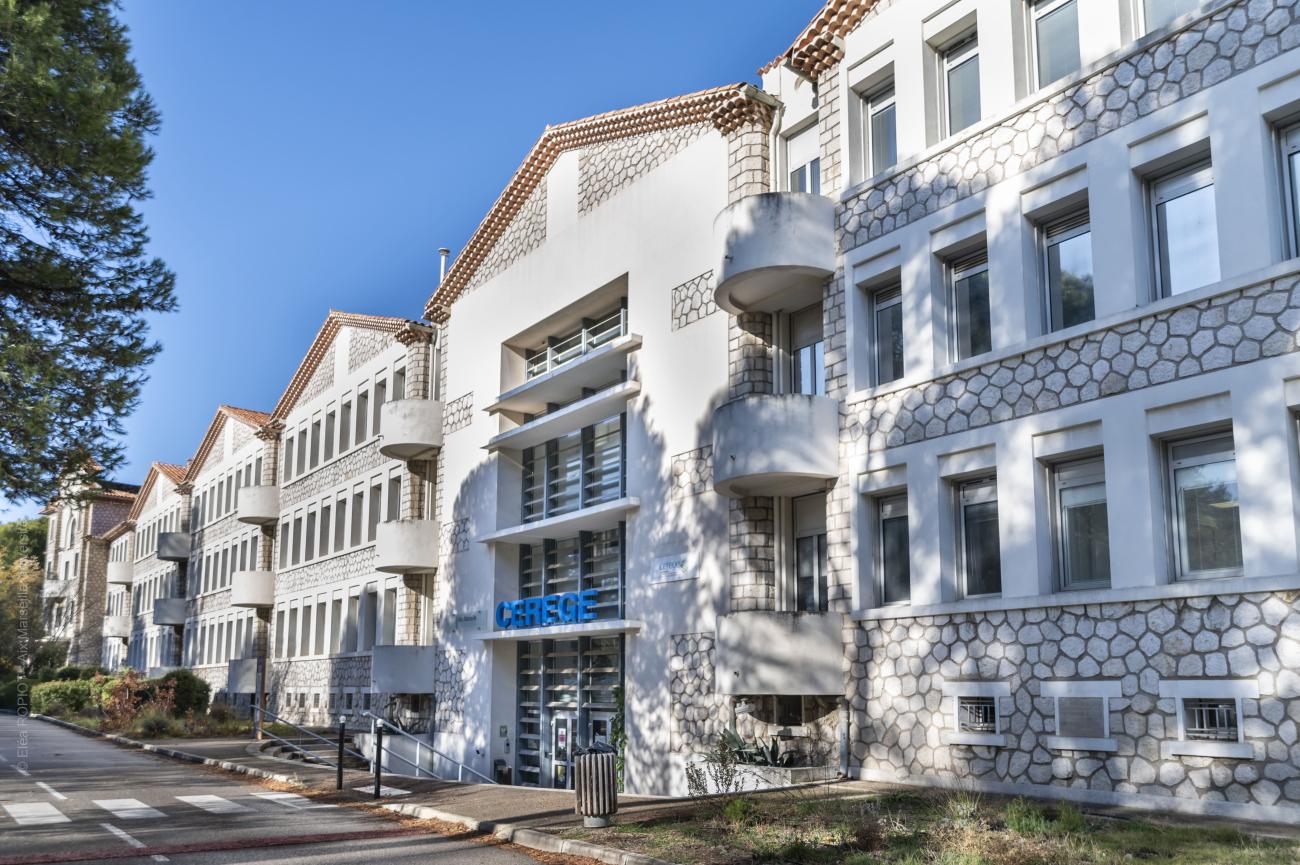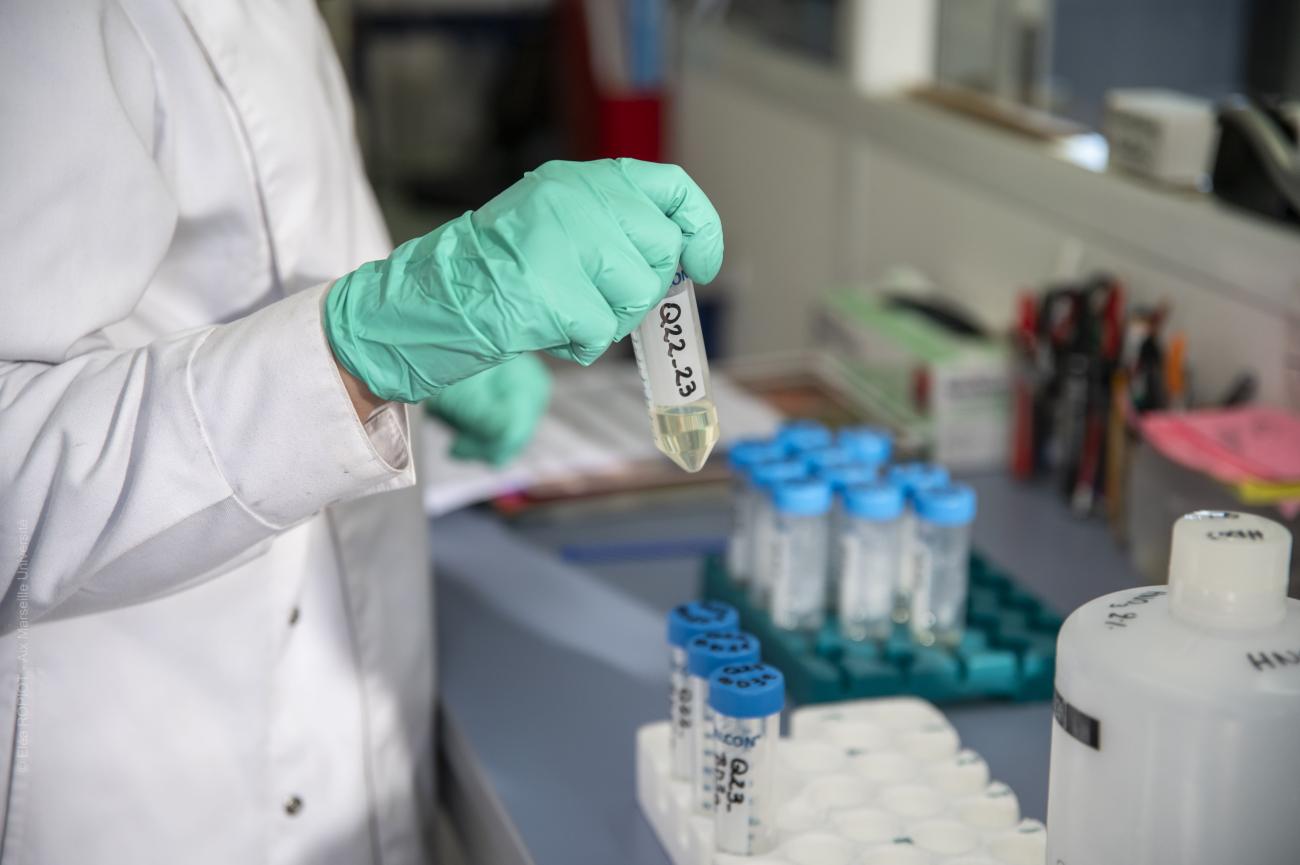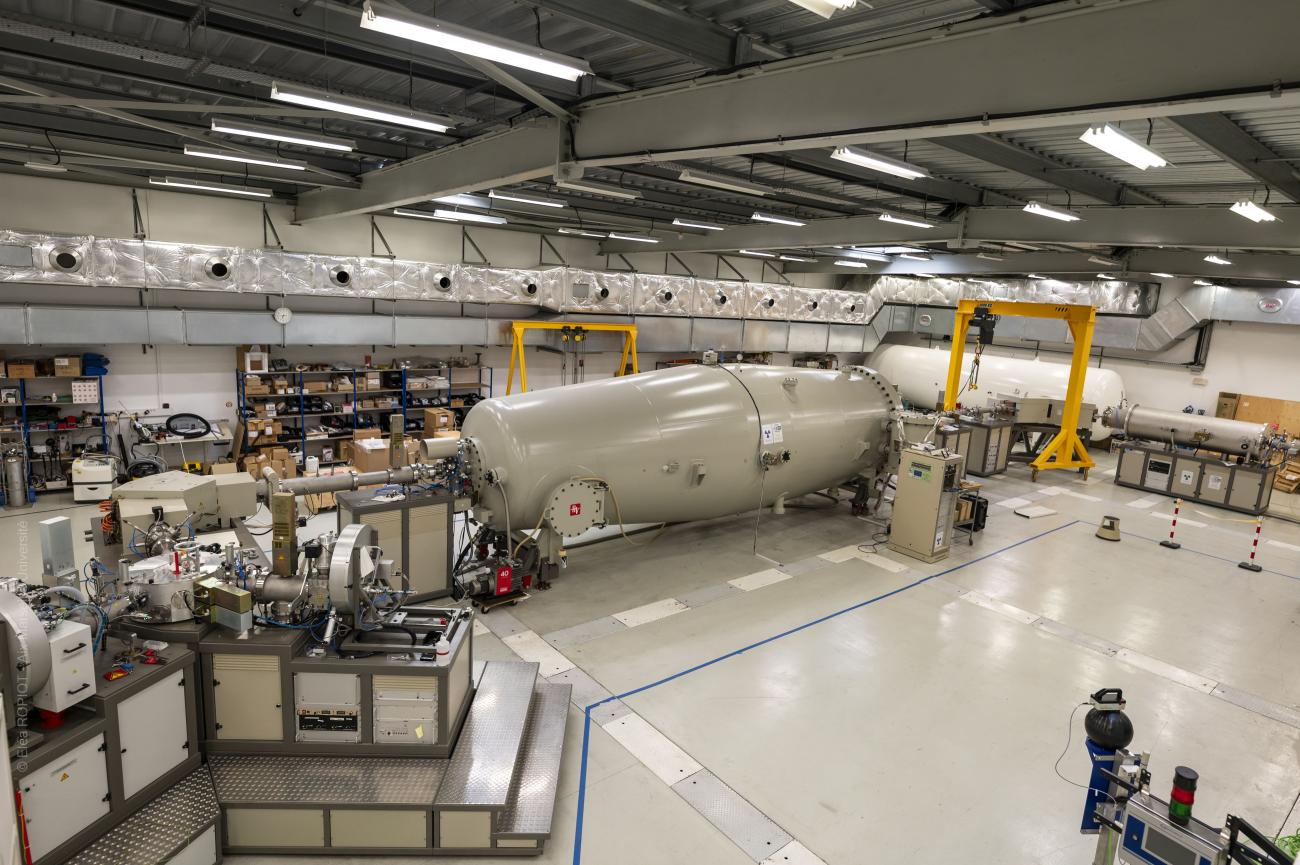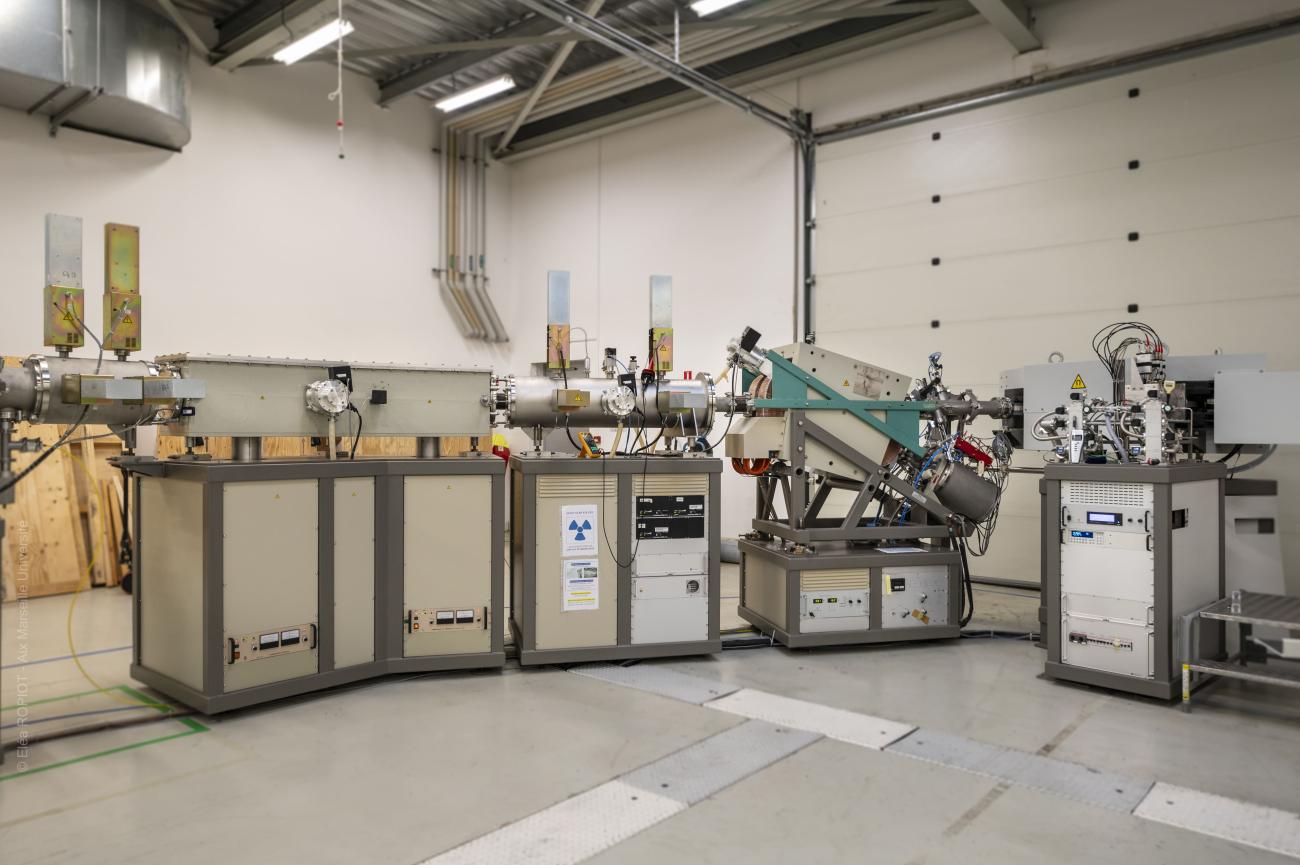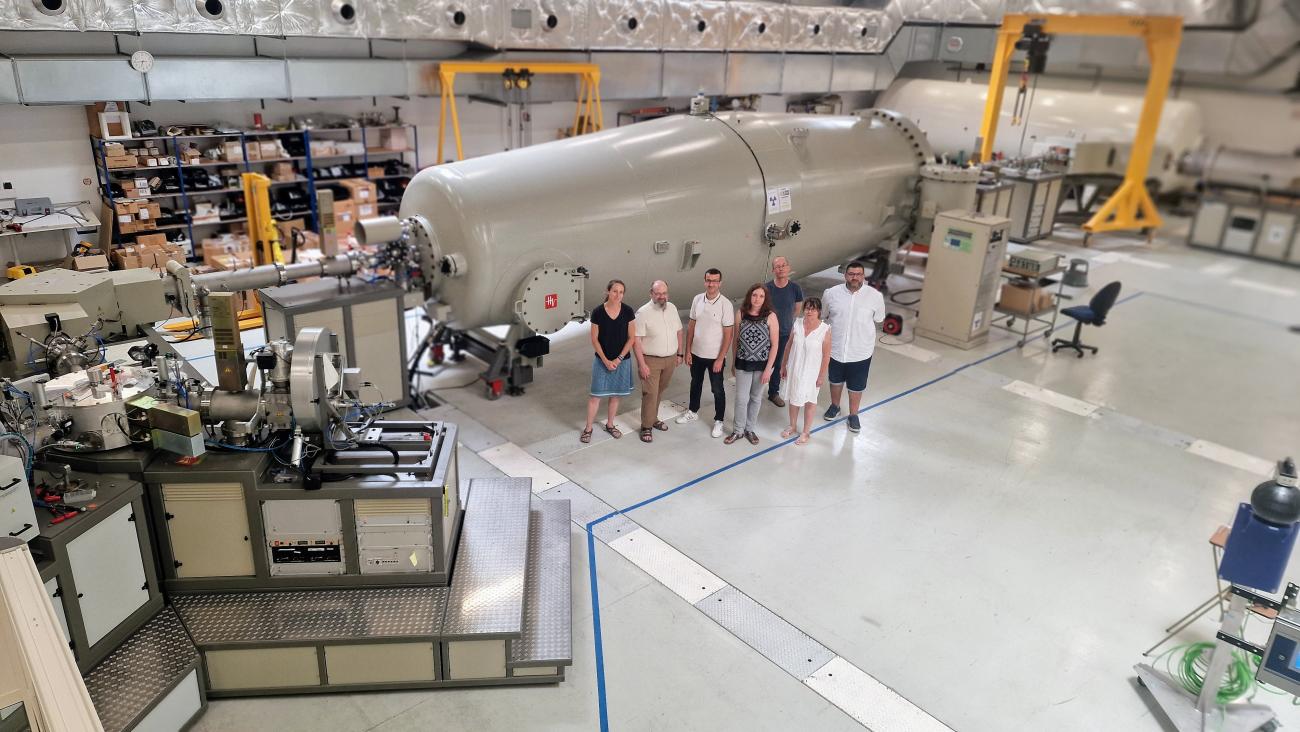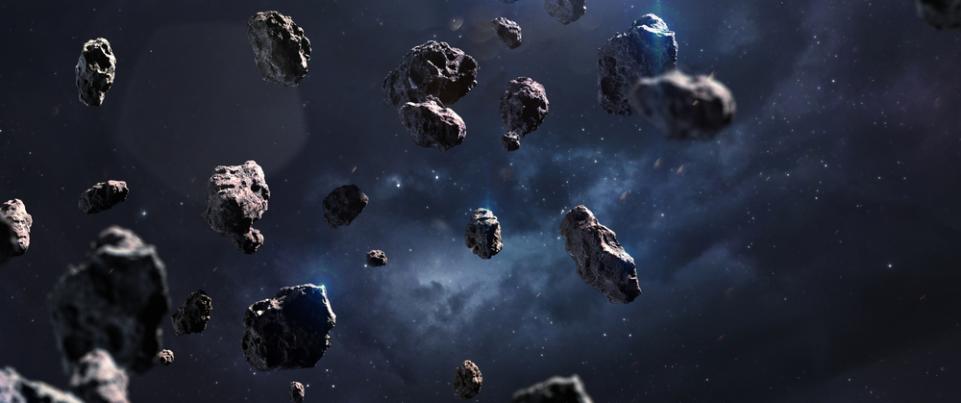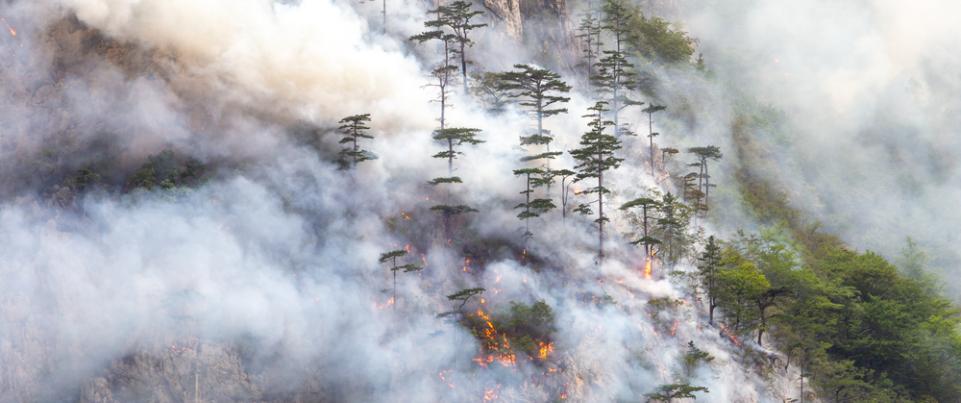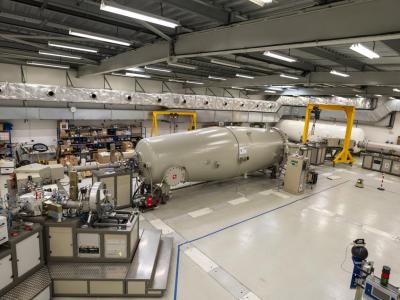
The Centre de Recherche et d'Enseignement en Géosciences de l'Environnement (CEREGE) on the Arbois campus is home to a national instrument: the Laboratoire National des Nucléides Cosmogéniques (LN2C) and its ASTER accelerator mass spectrometer. Take a guided tour of this genuine time machine with Lionel Siame.
Establishing chronologies with cosmogenic nuclides
Cosmogenic nuclides such as 10Be, 14C and 36Clare essential tools for establishing chronologies in the earth sciences. These nuclides are created when a cosmic ray particle interacts with the nucleus of an atom.
Cosmogenic nuclide dating is a dating method that exploits cosmogenic nuclides found in trace amounts in the environment, in rocks or soils, for example. It can be used to measure the exposure age of samples, i.e. the length of time they have been exposed to cosmic radiation.
The Earth has a magnetic field which, in addition to its atmosphere, filters out cosmic radiation. The atmosphere attenuates most cosmic particles. The production of these cosmogenic isotopes at ground level is dependent on the variability of the Earth's atmospheric field. The weaker the field, the higher the isotope production, as the magnetic field is less filtered. Conversely, the stronger the atmospheric field, the lower the cosmogenic isotope production, as the magnetic field filters out more.
Access to these isotope concentration measurements is a major challenge in the geosciences, for example in the study of climate change, environmental transition or seismic risks.
Two techniques for using cosmogenic nuclides
Secondary cosmic ray particles generated in the atmosphere penetrate the ground, triggering nuclear reactions in rock minerals. Cosmogenic nuclides occur in minerals such as silica. Quartz is an example of a silicate that is highly resistant to time and abundant on the earth's surface, making it widely used in geochronology. It is also easy to purify, making it possible to recover the isotopes of interest.
There are two uses for cosmogenic isotopes: dating or determining the rate of denudation. Measuring the accumulated concentration of cosmogenic isotopes is tantamount to measuring the duration of exposure to cosmic radiation. The more isotopes there are, the longer the surface studied has been exposed to cosmic rays.
Studying the rate of surface denudation enables us to quantify the evolution of landscapes as a result of cosmic bombardment. Thus, an exposed surface will first see its concentration increase, with a concentration inversely proportional to the speed of surface denudation when erosion moves sand and rocks, for example.
The idea of using cosmogenic nuclides to establish chronologies was first put forward in the 1950s, but at the time there was no capacity to measure their concentration. Now there's a solution: accelerator-based mass spectrometery!
ASTER, an accelerator-based mass spectrometery facility
The ASTER Accelerator Mass Spectrometer (Accélérateur pour les Sciences de la Terre, l'Environnement et les Risques - Accelerator for Earth, Environmental and Risk Sciences) is located on the Arbois campus, just a stone's throw from CEREGE. It is a national instrument of the RéGEF and a Aix-Marseille platform. Accelerator-based mass spectrometry consists in isolating elements according to their mass (conventional mass spectrometry), but thanks to acceleration and passage through a sheet of silicon nitride a few micrometers thick, it is possible to separate atoms with identical masses (isobars) but different nuclei (protons + neutrons).
Take beryllium 10, for example, which has an isobar 10B (boron 10) that is abundant in nature. Two isobars have the same number of nucleons (in this case 10), but a different number of protons (4 for 10Be and 5 for 10B). The 10Be, which has four protons, will move faster through the foil than the 10B, which has five. The gas pedal will give the cosmogenic isotopes enough energy to pass through the foil, enabling them to be separated and counted.
Sample preparation
During sample preparation, researchers start by extracting the quartz from a rock. One kilogram of rock allows them to recover up to a few hundred grams of quartz, which then needs to be purified. Quartz purification removes the atmospheric 10Be adsorbed on the edges of the grains, using acid dissolutions. Only the "pure" quartz naturally present within the quartz is obtained. This quartz is then subjected to several resin chromatographs to extract the cosmogenic isotope of interest, in this case 10Be, which is produced "in situ", i.e. in the mineral.
Please note that gas pedal mass spectrometry measures the 10Be/ 9Be isotope ratio, not the 10Be concentration. This is why we weigh the quantity of quartz extracted and put into solution, in order to add the spike, i.e. the quantity of 9Be known to fix the 9Be/10Be ratio.
Sample arrival at ASTER and passage through the machine
The sample arrives in powder form, to which the researchers add a current conductor. This is then packaged and placed in a copper cathode, which in turn is placed in the machine's source. Alongside the measured samples, the scientists place control blanks to assess the quality of their chemistry. Depending on the tested samples (10Be, 36Cl), this wheel is placed in one of the machine's two sources.
The ionized sample passes through a large magnet, which selects the mass to be injected into the gas pedal: a large bomb filled with insulating gas. Between the entrance and exit of the canister, acceleration drops from 30,000 volts to 5 million volts. At the centre of the accelerator, the beam passes through an argon gas. This gas peels off the oxygen molecules, leaving only isotopes such as beryllium or boron, or chlorine and its isobar, sulfur.
At the output of the accelerator, electromagnetic lenses refocus the beam. Once refocused, the beam passes through a second magnet and then into a large cylinder where the stable element (e.g. 9Be) is measured. The 10Be and boron then pass through the micrometer foil, which slows down the isobars. Finally, a passage through a last magnet deflects the isobars once and for all, allowing the 10Be to continue its course on its own and be measured at the end of its course on electronic sensors. It is this precise measurement of the number of atoms that will enable the rock sample chosen at the outset to be accurately dated.
A unifying tool
The National Cosmogenic Nucleides Laboratory (LN2C), based at CEREGE, gives the national and international community unrivalled access to cosmogenic nuclide measurements. ASTER is a federating tool that interests cross-disciplinary teams and gives rise to numerous international collaborations.
As part of the national service, samples can be sent directly to the laboratory, where they will be fully prepared and measured by LN2C engineers. Researchers and students from other universities can also come and prepare their own samples in the LN2C laboratories. This gives them the opportunity to train in the techniques under the supervision of local engineers and researchers.
One of the ambitions of the LN2C teams is to give access to this technology to countries in the South, thus speeding up the setting up of projects and theses. Each year, one or two students come to the laboratory to learn the techniques required to export sample preparation to their home laboratories.
For all the work detailed in this article, as well as the support provided as part of their national service, the LN2C Aster team was awarded the CNRS 2023 collective crystal in the "Direct support for research" category. The "cristal collectif" is awarded to teams of men and women working in support of research, who have carried out projects whose technical mastery, collective dimension, applications, innovation and influence are particularly remarkable. This distinction is awarded in two categories: "Direct support for research" and "Support for research". Congratulations to the winning team!
Article published on April 17, 2024.
Photo credit: Eléa Ropiot - Aix-Marseille Université
Group photo credit for the CNRS collective crystal: Leslie Monnier


